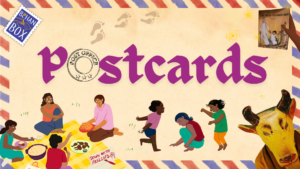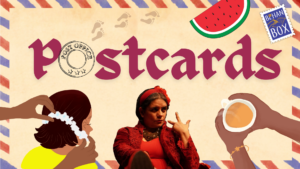Postcards: From a Satyashodhak Ceremony In Nagpur To a Quiet Rebellion In An Iranian Film
This month in Postcards: notes on relishing phalse berries, recipes for sukat chutney and pulusu, Celine Song's cinema, and more
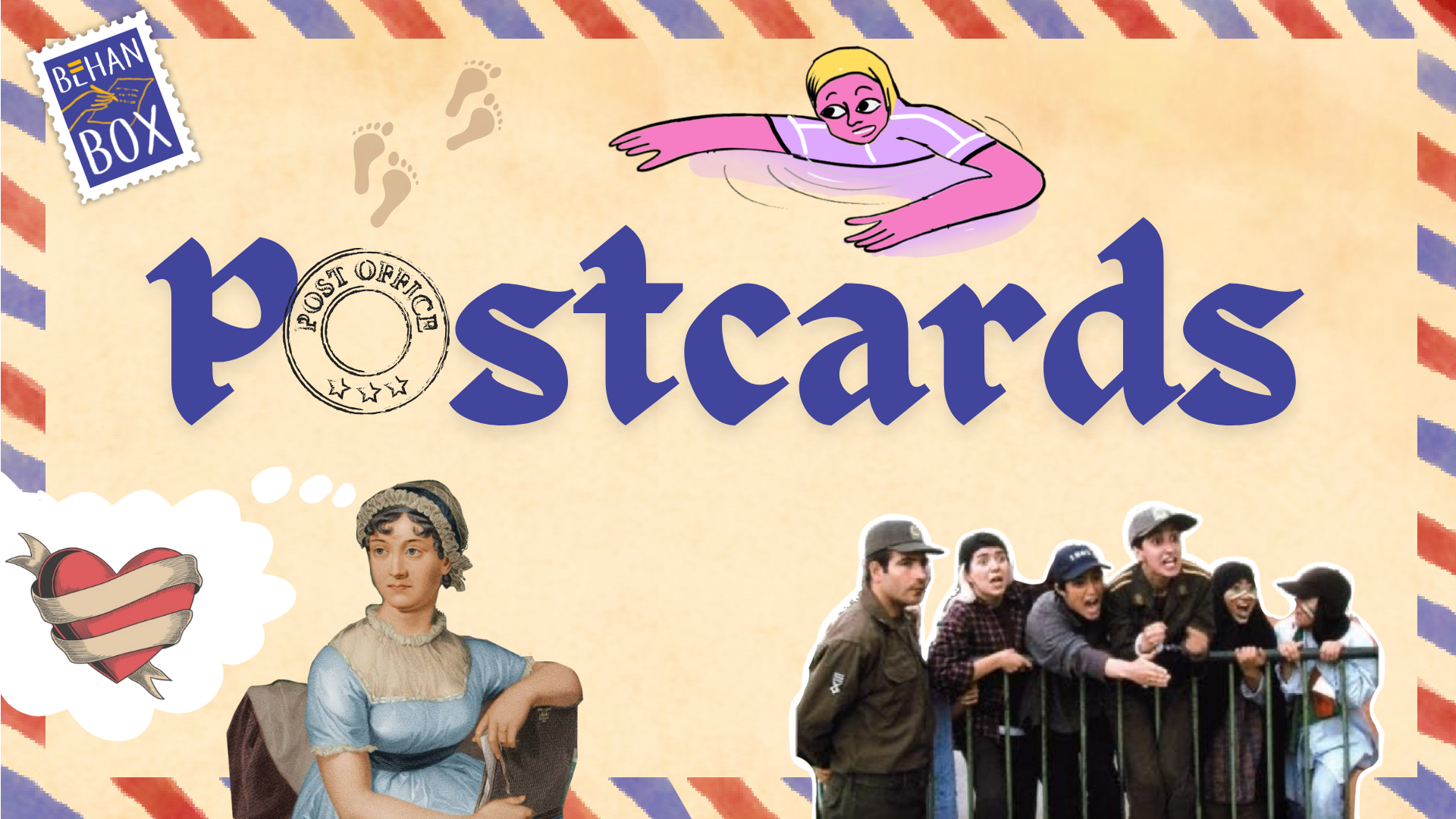
Dear reader, we write to you about the people, places, and ideas that brought team BehanBox joy this month. One postcard, every month.
A Swim Meet And My Redemption Arc
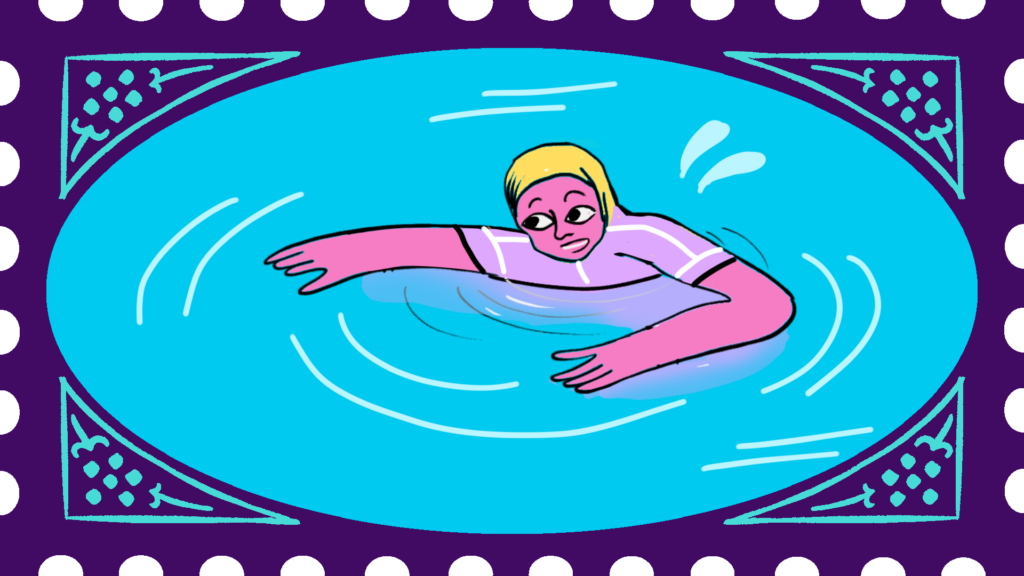
Earlier this month, I won a bronze medal in the Tamil Nadu State Masters Swim Meet for a 50-metre breaststroke race. The 1-3year-old Anannya wouldn’t have believed it. I was the girl who’d make up period excuses to skip PT classes, panicked at the sight of volleyballs, and always, always came last in sprints.
Sport wasn’t for me—I had decided that early on. Too intense. Too exposed. Too many ways to fail publicly. And somewhere along the way, I quietly absorbed the voices around me that said being sporty meant being less feminine. Growing up, I secretly longed to be athletic. I envied the post-match glow on my brothers’ faces—their ease, their power. They moved through the world like they belonged in it, while my body always felt like something to manage or perform in, not truly inhabit.
This summer, something changed. I returned to swimming with no real goal in mind. I didn’t expect to get selected to compete and certainly didn’t expect to win a medal. But I kept showing up. I remembered how good it felt to move not for appearance or approval, but for the simple joy of being in motion.
On race day, I wore a pretty teal swimsuit and lined up beside other women. I touched the wall and looked up to see I had placed third. Nothing could wipe the goofy grin off my face all week. But the real win? Letting go of the belief that I wasn’t “the athletic kind.” That’s the sweetest redemption arc I could’ve asked for.
Anannya Parekh

An Ode To Dancers In Movie Theatres
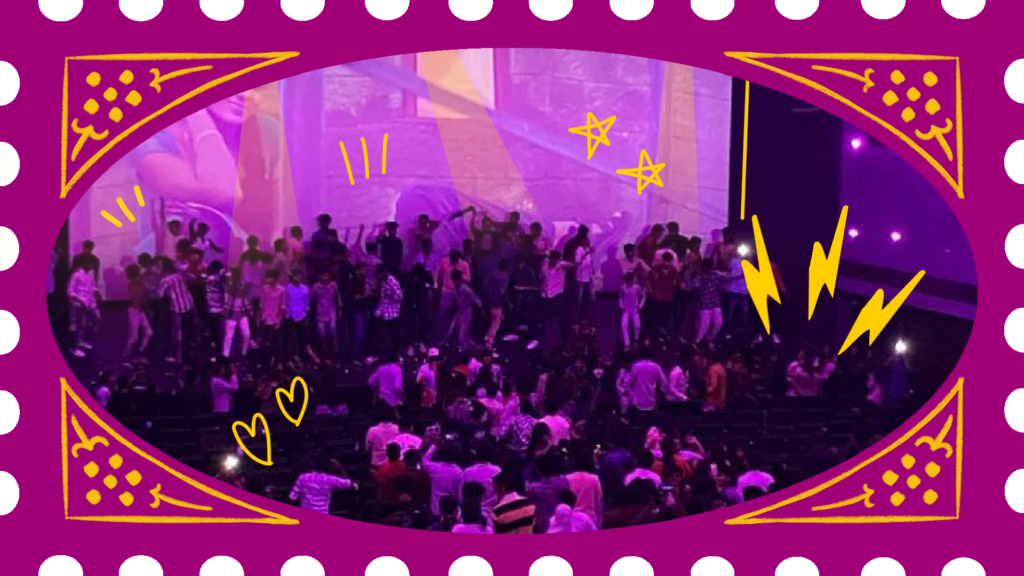
In Tamil Nadu, watching a film is never merely watching a film. Vying for first-day-first show tickets, speedily scrolling past potential spoilers on social media, or watching ardent, weepy fan associations garland posters and cutouts of actors – cinema is a whole moving, collective cultural experience here.
When I moved to Chennai a few years ago, I found myself living at movie theatres. I watched most films that featured on the big screen, whether it topped or tanked box office charts. I returned again and again to Kamala Theatre or Rohini, in anticipation of hit songs. I would crane my neck to watch groups of boys hoot and cheer their way to the front of the screen of theatres and talkies, dancing their hearts out.
Recently, a friend and I watched actor Vijay’s Sachien, which was re-released 20 years after its debut, at Ampa Mall. In pink pants and pastel shirts, the young charmer attempts to woo Geneila, written the way Tamil cinema frustratingly writes women, as the fog machine of the early 2000s filters in and out, playing matchmaker. I sat straighter as the hit song, Vaadi Vaadi came on. I watched as the usual group of boys jogged past the red seats and joyously moved about.
This time, a group of women threaded their way to the front and giggled while bringing out their best koothu moves, urging friends to join. I forgot the movie’s plot for a while. A smile nearly cracked my face open as I lived vicariously through their joy.
Archita Raghu

Owning “Khatta Paani” And Mastering Pulusu
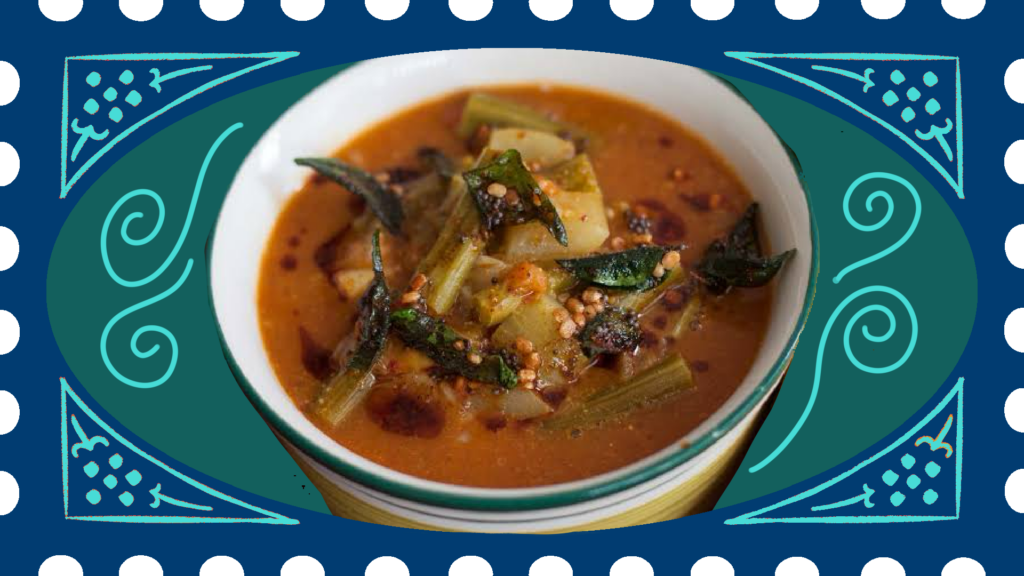
Tamarind water, or khatta paani, has a rather interesting backstory in my life. As a Madrasi (a generic term used for people from the southern states), growing up in undivided Bihar and Odisha, we were often called “khatta paani” because we ate rasam, which, if you really think about it, is exactly that. It was a pejorative reference aimed to mock and bully us. ‘Othering’ appeared in different forms– like loudly uttering ‘angalapangalabangala’, a mock ‘South Indian’ gibberish.
The most visceral reaction to this was to disown that identity – the food, language, culture – in a bid to fit in. The idlis my mother packed were an embarrassment. Curd rice? Not if you did not want people to mock you how we ate, licking from the elbow upwards to the fingers.
The food I loved – rajma, chole, aloo ke parathe, Bihari aloo bhujia.
A few years ago, I began to pay attention to our food, especially during visits home. It was the inguvva charu or rasam, the gently simmering tamarind water with copious amounts of hing and curry leaves, in my mother’s kitchen that awoke my dormant Telugu food sensibility. I found a new appreciation for the aroma of methi seeds that she roasted ever so patiently on a low flame to make a powder that went into chutneys and pulusus. My favourite was thotakura aava pulusu, an amaranth leaf stew cooked in tamarind and mustard-chilli paste. On hitting the tongue, it does a slight jig. The mustard paste hits your solar plexus while the tamarind lights up your larynx.
These days, making pulusus, tangy tamarind-based stews from the Telugu states, is a source of great joy. There is delight in watching the pale tamarind water, mixed with variants of vegetables and spice powders gently simmering away, become a delectable potion. I spend my weekends getting the balance of sour, sweet and chilli right, and watching the alchemy of the khatta paani. I still love my rajma-chole but loving pulusus is owning my heritage and identity and giving a thumbs down to prejudices – past and present.
Here is a recipe for Dappalam or Mukkala Pulusu which I made last weekend:
Cut big cubes of vegetables like pumpkin, ash gourd, sweet potato (a must).
Boil them in diluted tamarind pulp with green chillies, salt, turmeric, curry leaves, and hing until they are done but still firm.
Add jaggery (adjust to your taste) and a slurry of rice powder to give it body.
Separately roast: 4 tbsps of dhania (corriander seeds), 3/4 tbsps of methi seeds, hing, and red Guntur chillies in oil. Once cool, grind. Add this powder to the stew and simmer for 10 mins.
Temper with methi seeds, mustard seeds, red chillies, curry leaves, and hing. Enjoy with rice, mudda pappu (plain toor dal boiled to a thick consistency), topped with ghee.
Bhanupriya Rao

Bearing Delhi Summers With Phalse Berries
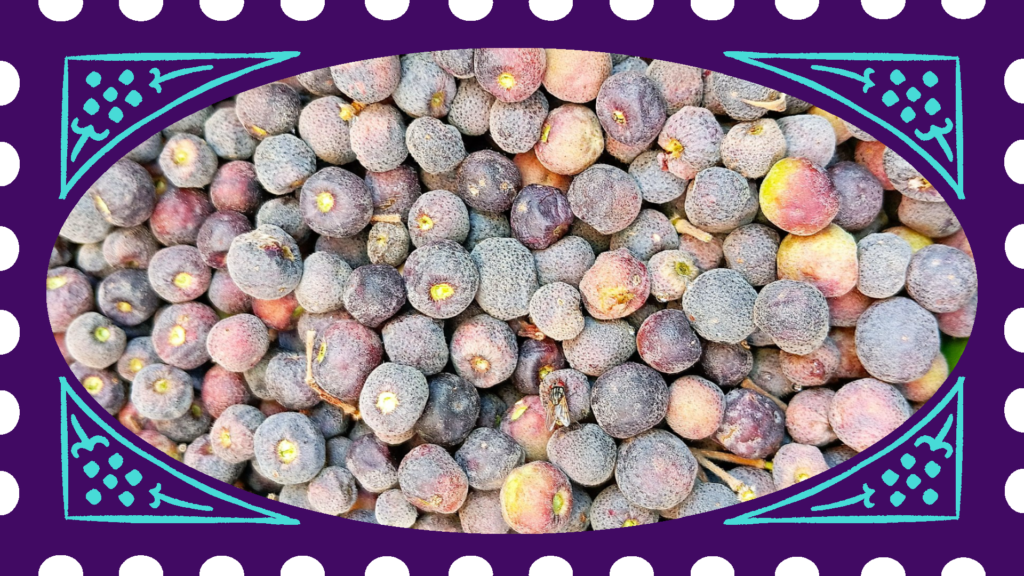
Delhi is simmering. The heat is enervating, and the rains are weeks away. You know that the summer’s tyranny is peaking when across the shaded streets of Delhi’s colonies, the call of a hawker rings out: Khatte meethe phalse, bade rangeele phalse. For nothing marks the arrival of the fiery months as phaalsa, the small, red-purple, sweet-sour berries. Like the relentless summer call of the koel, this is one of the small graces of nature that makes the summer bearable, sometimes.
Phalsa has acquired a superfruit rep in the last few years which means that it now comes packaged and sold through delivery platforms at obscene prices. And squashed into a sherbet as well. But where is the joy in that? The fun is to buy it off phalsa wallah, his basket piled with the fruit, the rich colours blotting the paper packet he packs for you generously sprinkled with chat masala. And a 100 gms is more than enough, for the phalsa makes for a small, dainty nibble, and too much is a guarantee of a sore throat.
Some are tart, some utterly sweet, some ripe and wrinkled, others young and firm, they are one flavour at the tip of your tongue and another as you swallow them. But together they are an explosion of tastes in the mouth.
I thought of the shy and retiring phaalsa as a mystery fruit till I discovered a Khabar Lahariya feature on how the fruit that grows in plenty in Chiraigaon, Varanasi is a source of livelihood for women. The women earn a pittance for plucking the fruit, some Rs 30-40 a day and the fruit lasts just 20 days in season. But its wood is sturdy and the women cut strips and weave them into baskets too.
Malini Nair
This Monsoon, A Joyful Recipe For Sukat Subji

Strolling through the weekly market and buying sukat (small dried fish) was the highlight of the month. In my village, Bhor, located around 50 km from Pune, a weekly market comes up every Tuesday. There are stalls of fresh vegetables, fruits, pulses, spices, and dried fish. Whether you intend to buy anything or not, a walk through the riot of colours in the market is incredibly refreshing. Even the memory of this makes me want to return instantly.
At the fish stall, the different varieties of dried fish were beautifully arranged – bombil (dried Bombay duck), salted bangda (mackerel), and sode (dried prawns). I felt like buying everything but since I don’t eat fish myself, I bought a quarter kilo of sukat. Its strong aroma had already begun to ooze out of the sturdy wrapping paper.
Last week, I unwrapped the paper bundle and cleaned the sukat thoroughly. I dry-roasted it on low heat for 3-4 minutes until it became crisp and stored it in a clean jar. I soaked a small portion of the fish in water for ten minutes. In a pan, I heated a generous amount of oil on medium heat, added some fresh curry leaves, mustard seeds, and 3-4 crushed garlic cloves. I sautéed chopped onions until they turned soft and pink, and added diced tomatoes. I seasoned the mix with salt, turmeric, chili powder, and a pinch of garam masala.
I added the soaked sukat, stirred it gently, covered and let it steam for ten minutes. Then, a generous dash of freshly chopped coriander. And my first attempt at making sukat was a blockbuster! I could sense it from its aroma. Sukat subji or chutney with hot jowar bhakari (flatbread) feels like absolute bliss in the monsoon.
When the rains come, I want to try making sodyacha kalvan (dry prawns curry) with nachni bhakari (ragi) flatbread. I may or may not eat all of it. But the idea of handling dried fish, seeing its color, texture, the absorbing aroma, and trying out recipes with it has become my new source of joy.
Priyanka Tupe

Love in Celine Song’s Cinema
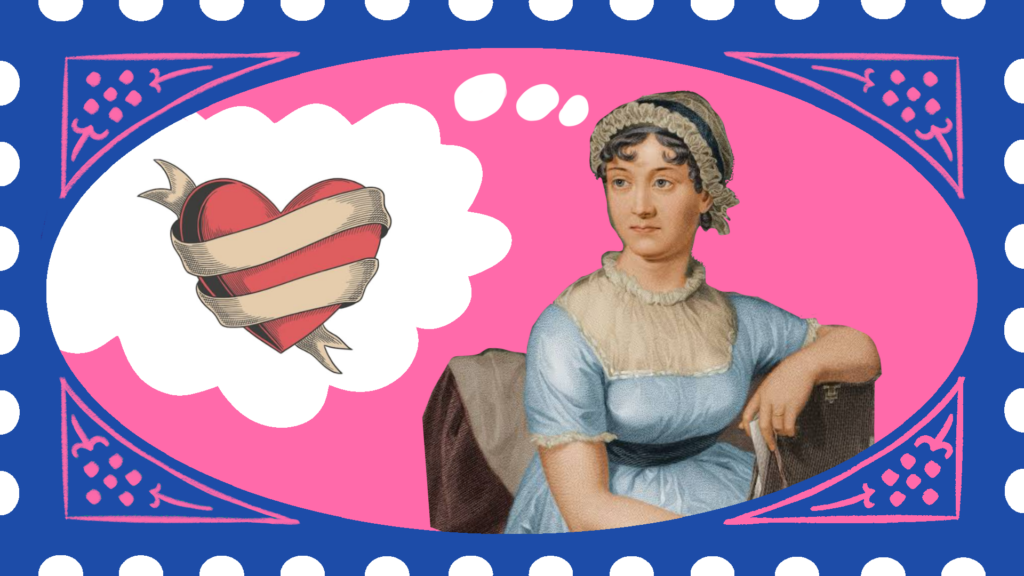
This is not a movie review, and I will not give away who Dakota Johnson’s character chooses at the end of The Materialists. No, it’s not about two swoon-worthy men or the timeless allure of a love triangle. This is Celine Song’s cinema, looking intently at the marriage industrial complex in 2025, which happens to hold a well-timed mirror to the politics of marriage and money in Jane Austen’s works in the 18th century.
I walked away from the movie with a curiosity about what Austen would make of dating (or courtship) today. We’re always trying to ‘solve’ for love and ‘fix’ ourselves; being coaxed to join platforms where algorithms spit out matches based on economics; entangled in a matrix of numbers and statistics computing for family backgrounds or attractiveness. The language of optimisation has taken over, and algorithms and hypercapitalism have become entangled with romance. A woman in the movie towards the end refused to be a ‘merchandise’. Would Austen gape at this barrenness of emotion? Not quite: marriage has been a business deal in her books, money and materialism always dictating the fate of her heroines. Even today when women can work, own property, vote, they are still operating in patriarchal social systems. This knot tying love, class, families, friendships, community, taboos, disappointments, aspirations, and women’s place in all of this has held strong over two centuries – no wonder Song drew on Austen’s romantic traditions and sought references, among other things, from four of her six published novels. Coincidentally, we’re celebrating 250 years of the author this year. A part of me fancied a scenario, a dinner party or a ball, where the two women would get on handsomely.
No movie, even one about love in the modern world, in Song’s hands is destined to rest easy in your heart. I walked away with a restless heart and a skeptical mind, holding and twisting this thing we call love over and over in my head. What makes people right for each other at the end of the day, and how do we build social systems that reflect these tender bonds of affection, romantic or otherwise? In between worlds – New York, Longsborough, Mansfield Park, Delhi – and at the movies, I stopped to consider why we love the people we do, why we hurt the way we do, and what, if anything, does it say about who we are. Between wars and tragedies, it was a privilege to be thinking about love in the summer of 2025.
Saumya Kalia

Football, Fandom and Quiet Rebellion

All of my recent association with football has been watching my partner in despair while Manchester United loses terribly for the umpteenth time. This changed last Sunday when I watched the 100-minute masterpiece ‘Offside’ by Iranian director Jafar Panahi.
The 2006 movie, set almost entirely outside a football stadium in Tehran, follows a handful of young women trying to sneak into a World Cup qualifying match, despite the ban on women attending games. They’re caught — some in fake beards and oversized jerseys — and held in a makeshift holding pen just outside the roaring stadium.
Shot with handheld cameras during an actual game, the movie is punctuated with real crowd noise giving us this palpable sense of immediacy, making us feel like one of the girls. Worried for their safety, I also understood why they took these risks.
There’s something quietly powerful about watching a group of girls breaking the rules just to watch a football match. It’s not rebellion for rebellion’s sake, but simply because they love the game. I was struck by their camaraderie. Strangers at first, they quickly become allies, even co-conspirators, united by a shared passion and the absurdity of the restrictions placed on them. There’s humor in their resourcefulness, warmth in their banter, and defiance in their laughter. You can feel their frustration, yes, but also their spirit — alive, kicking, and unstoppable.
Despite the barriers, the fences, the soldiers, the laws, they never feel defeated. It’s a reminder that joy can be resistance, and that happiness sometimes comes from seeing others insist on their right to live fully, even in the smallest of ways. ‘Offiside’ made me happy because it felt like a quiet victory, shared with every woman who’s ever heard “you can’t” and responded with “just watch me”.
Shreya Raman

Celebrating An Anti-caste Union, A Glimpse Into A Hopeful World
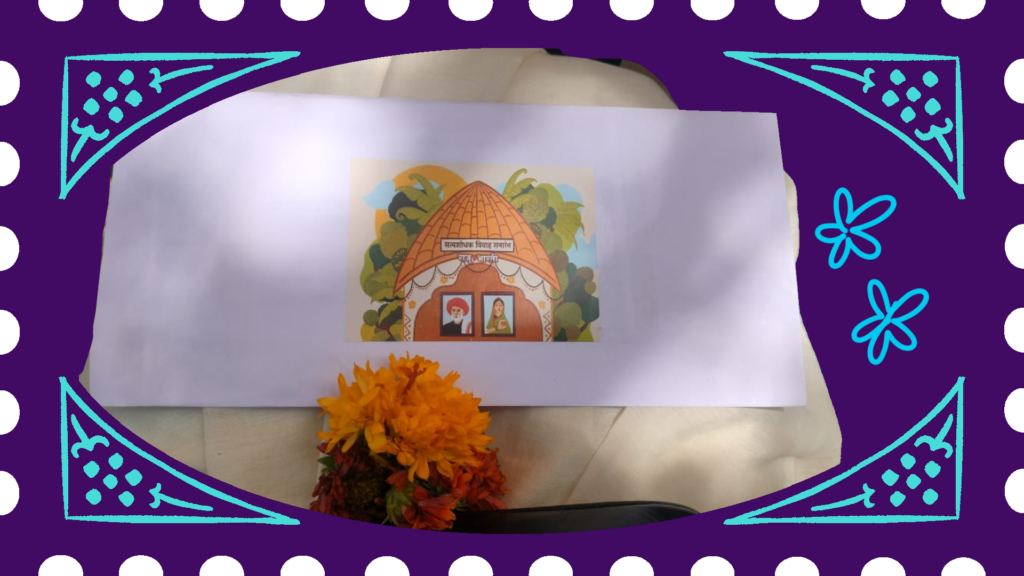
On June 8, I witnessed a wedding unlike any I’d ever attended. Raju Kendre and Bharati Chaudhari were getting married in Nagpur, at the Eklavya Satyashodhak Youth Center. It was a Satyashodhak ceremony – a marriage that breaks away from Brahmanical rituals. Instead, it centers love, equality, and choice.
The day before the wedding was like a festival and the space was alive with cultural performances and an open mic. Rappers like Vipin Tatad and Sumit Samos took the stage with powerful words. Lighting, food, music and seating – everything was a collective effort from friends and fellows of Eklavya. There is something deeply moving about a celebration built entirely by the community. We started with Bhim geet and then moved on to dancing to Bollywood songs, and laughing.
The wedding venue had a book stall and a T-shirt stall featuring anti-caste figures, small but powerful reminders of the values this gathering stood for. During the ceremony, family and friends took turns talking about Raju and Bharati, their work at Eklavya India Foundation, the intercaste union, and their commitment to the ideals of Phule and Savitribai. Every word was filled with pride, love, and admiration.
Each guest received an envelope with the Satyashodhak oaths. Raju and Bharati had written their own vows, and personal promises rooted in shared values. They pledged to live with empathy and love, to reject all forms of caste, class, religious and gender discrimination, to honour each other and all living beings, to respect labour, to care for their health, and to be present for their families and society. After the meal, we all washed our own plates under a tap. It was a small act but everyone was equal, sharing the load. Before we left, we signed a board that said, “I commit to a Just, Equal and Dowry-Free Society.”
It wasn’t just a wedding, it was a glimpse into a more just and hopeful world.
Urvi Sawant

What movie, book, art, sight or sound inspired you this month? Mail us your postcards at contact@behanbox.com using the template below (or simply write to us). We’ll share your missives with our readers on social media.


Your monthly brain teaser about gender, care, and politics with no perfect answers.
While reporting on how heat stress impacts our work and health, we found stories of women who extended their 8-hour shifts to 13 hours to meet their daily targets. They spent more time in a day doing the same work due to heat fatigue, but overall got paid less for the day. Help us answer:
Are the women suffering a financial loss, or earning the same as before?
Write to us with your thoughts.
Behan’s Responses
In the backdrop of the selection of two women armed forces officers to the panel of spokespersons for Operation Sindoor, our last puzzler pondered: If women objected to the name ‘Operation Sindoor’, would that make them anti-war or anti-government?
Our quest for this answer was coupled with navigating daily news and disinformation from a few outlets. The question was weighed and the answers came in. Both anti-war and anti-government, ardently declare most responses. Add anti-feminist to the mix. “Governing someone is a never-ending war. So, both. Not that puzzling,” said a user on Instagram. Others quipped, “that would make them anti-women apparently” and “anti-chemicals on the head perhaps too.”
Want to explore more newsletters? Our weekly digest Behanvox and monthly Postscript invite you, the reader, into our newsroom to understand how the stories you read came to be – from ideation to execution. Subscribe here or visit our Substack channel for more.

We believe everyone deserves equal access to accurate news. Support from our readers enables us to keep our journalism open and free for everyone, all over the world.
